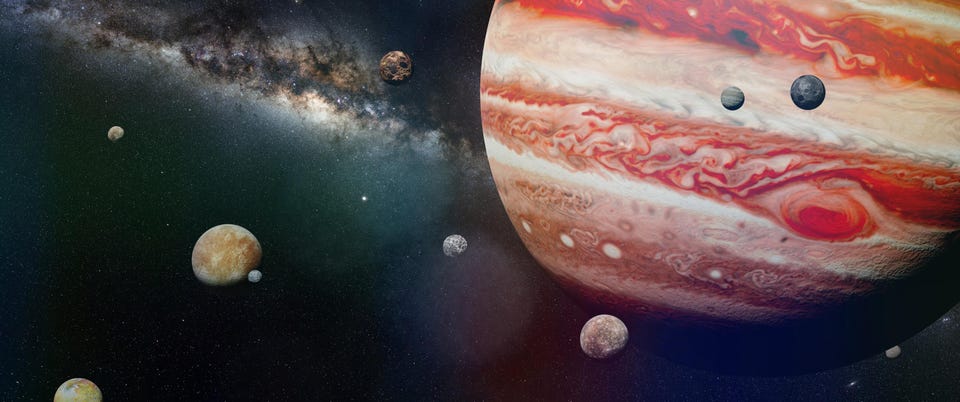12 New Moons Have Been Found Orbiting Jupiter, Say Scientists


Jupiter now officially has 92 moons after astronomers observed 12 new natural satellites orbiting the solar system’s largest planet.
That new total puts it nine ahead of Saturn, which has 83 moons.
As reported by Associated Press, the new moons have now been made official by the International Astronomical Union’s Minor Planet Center.
All of the moons are just 0.6 miles to 2 miles in size and considered “outer moons” because they orbit over 550 miles from the giant planet. They all take at least 340 Earth-days to orbit the giant planet, with some taking over 550 days, according to Sky & Telescope magazine.
The 12 new moons were discovered in 2021 and 2022 using telescopes in Hawaii and Chile. Dr. Scott Sheppard, faculty member at the Carnegie Institution for Science, Earth and Planets Laboratory in Washington, DC, and member of the discovery team published the new findings.
Nine of the new moons orbit “backwards” relative to the inner moons, evidence that they are objects captured by Jupiter’s gravity.
Jupiter is most famous for its for its large Galilean moons Ganymede, Europa, Callisto and Io, which orbit much closer in. You can see all four with your own eyes in any pair of mid-range binoculars (10×50 are ideal) or any small telescope.
NASA’s Juno spacecraft is in orbit around Jupiter and has been since 2016. Launching in April 2023 is the European Space Agency’s JUpiter ICy moons Explorer (JUICE) mission, which will arrive in the Jovian system in July 2031 to conduct flybys of Europa and Callisto before going into orbit of the solar system’s largest moon, Ganymede. The only moon known to have its own magnetic field, Ganymede is larger than both Mercury and Pluto. JUICE will become the first spacecraft to orbit a moon in another planetary system.
Although it will launch later in October 2024, NASA’s Europa Clipper mission—which will conduct 50 flybys of Jupiter’s moon Europa as close as 16 miles from its surface—will take a more direct route so reach the Jovian system in April 2030.
Wishing you clear skies and wide eyes.
